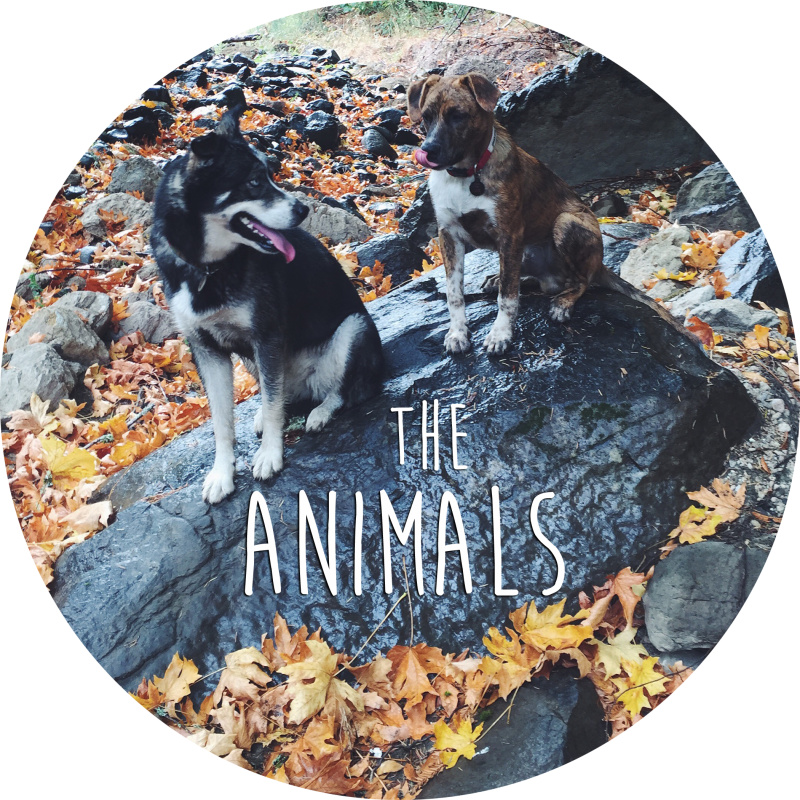Introducing Cats & Dogs
If you follow us on Instagram, you may have noticed a recent post featuring a skinny little kitten that Evan found under his truck at work. Although Evan is actually allergic to cats, he absolutely loves them, and we had talked about adding a feline to our family but hadn't really made the leap, so we named her Dylan (yes, she is a girl named Dylan) and we're taking her to get spayed and chipped and whatnot tomorrow. However, introducing a kitty into a dog's world can be tricky, so here are some tips if you end up in a similar situation:
First a quick caveat: Not every dog is suited to live with a cat, and visa versa. Dogs and cats can be very dangerous to each other, so proceed with caution and do not let dogs and cats that are not accustomed to one another spend unsupervised time together.
What you will need:
- A leash
- A confinement area such as a crate or baby gate (for the dog - not always totally necessary, but helpful)
- Treats
- Leave it
- Watch me or look (eye contact)
- Recall
- Stay
- Down
Start by Sniffing
It's best to start out letting the animals get a good sense of each others' scent with a safe barricade between them. For us, this meant crating Koa when we first let Dylan explore the house. This meant that Dylan could approach Koa when she was comfortable, without being overwhelmed by Koa's larger size or fast movements. For others this could also mean putting the two animals in adjacent rooms with the door in between closed, so they can get a whiff of the other through the door.
On Leash Intros
Using a leash when you first begin face to face introductions is also a great safety measure. The important thing is to work under or just at your dog's threshold.
What is a threshold? The dog's threshold is the point at which he or she can see and acknowledge something distracting, but is still able to bring his or her focus back to you.
For example, at 20 feet away from the cat, your dog know it's there, but isn't straining to get at it, but at 10 feet from the cat your dog is completely unaware of anything you are saying or doing. Working at 20 feet is working under your dog's threshold. Working at 10 feet is above your dog's threshold and will not yield any results. What you need to do is get back under threshold, to the point when your dog is still able to return focus to you. Begin to mark and treat for any "ignoring" behavior, like looking up at you. You can use a "watch me" or "look" cue to show them what you are looking for. Slowly decrease the distance to the cat, one step at a time. Each step of the way, wait for your dog to ignore the cat, and focus on you before moving on. If you get too close and the dog starts straining to get at the cat, move back a little and try again.
Also be mindful of the cat's body language while working with your dog, watching for pinned back ears, dilated pupils, puffy tail, arched spine, fast tail movements, etc. You do not want to over stress the cat, either, so work in small sessions with the animals, especially since the cat is just getting used to the new home still! In between sessions, keep the animals safe and separate.
Learning to Coexist
Once your dog has learned to relax around the cat and not zero in/chase it, you can try removing the leash, and once again, marking and treating for behaviors like ignoring the cat or walking away from the cat. This is where having a good "leave it" and a strong recall is pivotal. Observe carefully and when you can tell the cat is on the brink of making a movement that may interest the dog, get ready to use a leave it and/or call the dog to come to you and make sure you have treats ready! If your dog gets too worked up and excited at any point (chasing, vocalizing, etc), separate them once again until they have been able to calm down.
Easy Escapes

It may feel like a lot of work, and it is, but in the end not only do you get a new furry friend to add to your life, but you also get a lot of impulse control practice with your dog!








